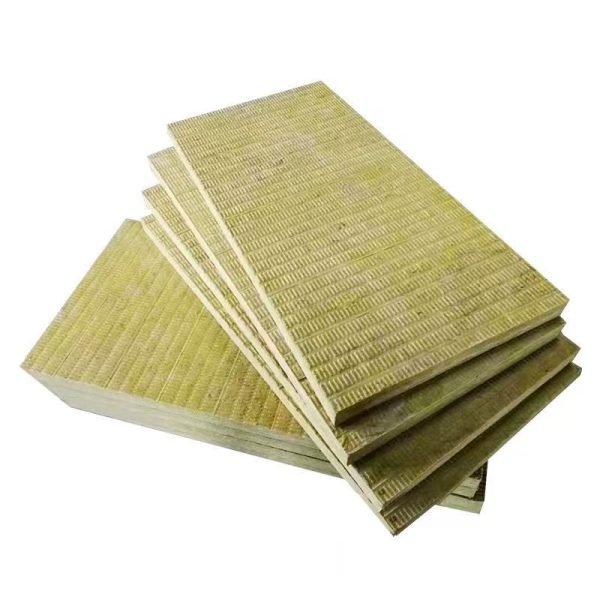


05 2025
The strength of rock wool products, especially the tensile strength, is very important for -E wind,ff. In the application of rock wool in the field of building insulation, there is a wrong mindset: taking the external wall insulation system as an example, rock wool products with a higher density must have better mechanical strength, and to improve the mechanical strength, the density of the rock wool material must be increased. Therefore, in many local technical regulations or standards in China, density requirements are put forward for the rock wool boards used in the external wall insulation system. Excessively high density will inevitably lead to an increase in the thermal conductivity, thus weakening the heat insulation performance of the rock wool boards and also causing inconvenience to construction and installation.
Rock wool board products have a development history of several decades in China. In recent years, due to frequent fires in the construction and industrial fields, rock wool, as a Class A thermal insulation material with excellent fire – proof performance, has received great attention and esteem from all sectors of the industry. As is known to all, in the testing items of thermal insulation materials, the thermal conductivity and density of the materials are very important testing indicators. The thermal conductivity is used to measure the thermal performance of the material, while the density index is used to better determine whether the thermal insulation material is within the scope of technical requirements.
1 Relationship between density and thermal conductivity
For fibrous materials, the change in thermal conductivity is related to the diameter and directional arrangement of the fibers, as well as the density of the product. When the diameter of the fibers and the arrangement of the fibers remain unchanged, either too low or too high a density of rock wool products has an insignificant contribution to the thermal insulation or heat insulation function. Its optimal density distribution range is generally. From the perspective of thermal insulation and heat insulation, for different system applications, when selecting rock wool materials or developing rock wool products, some basic principles can be followed: on the premise of meeting the usage requirements (such as strength, fire safety, etc.), the thermal conductivity should be reduced as much as possible, and the density should be within a reasonable range.
Taking the external wall insulation system as an example, there is a wrong mindset in the market: rock wool products with a high density must have better mechanical strength, and to improve the mechanical strength, the density of the rock wool material must be increased. Therefore, in many local technical regulations or standards in China, density requirements are put forward for the rock wool boards used in the external wall insulation system. However, such a high density will inevitably lead to an increase in the thermal conductivity, thus weakening the thermal insulation and heat insulation performance of the rock wool board and also bringing inconvenience to construction and installation.
2 Approaches to Reducing Thermal Conductivity
How exactly can we achieve both higher mechanical strength and low thermal conductivity while reducing the overall density of rock wool boards? Perhaps we can draw on the mature and advanced experience of Europe.The development of rock wool in the European region started early, with a leading technological level. Moreover, 80% of rock wool products are used in the building insulation field, and they have mature application experience. In the fields of roof and exterior wall insulation, Europe has developed and applied a product called oriented rock wool board, which has effectively solved the balance problem among the mechanical strength, density, and thermal conductivity of rock wool products. That is, on the basis of maintaining a relatively low average density, the thermal conductivity is reduced as much as possible, and it can even be reduced by more than 10% without sacrificing the mechanical strength of the material. The oriented rock wool board series products have been widely applied to the insulation and heat insulation fields of building envelope structures such as roofs and exterior walls in Europe.
Compared with commonly used rock wool products, the weight can be reduced by more than 15%. It is more convenient during handling, easier to construct, and imposes less load on the exterior wall. Thanks to its superior thermal insulation performance, lower density, and sufficient mechanical strength guarantee, as well as years of application experience in Europe, the oriented rock wool board has been proven to be a highly operable building thermal insulation product with significant comprehensive performance advantages. For the domestic thermal insulation material market in China, thermal insulation materials that possess excellent fireproof and thermal insulation performance and meet the requirements of mechanical strength also hold great potential.
We focus on the research and development as well as manufacturing
of thermal insulation materials and sealing materials.